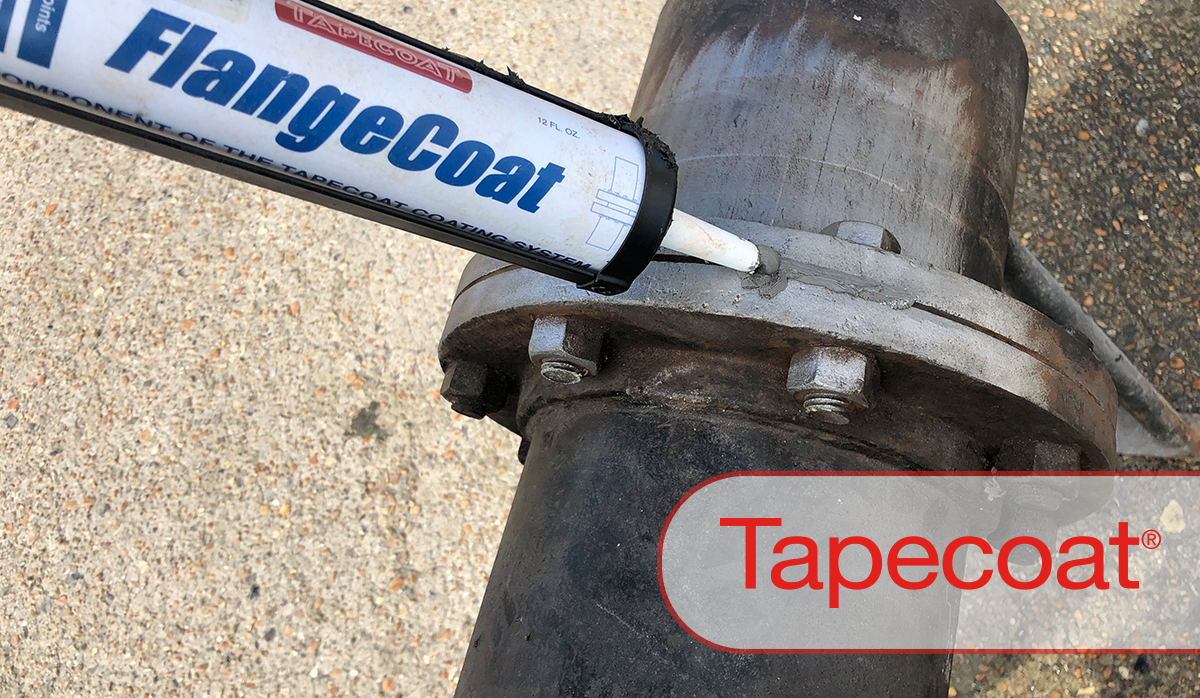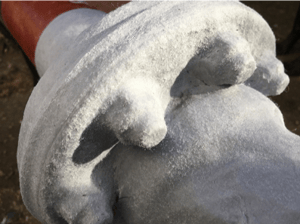Rust, or specifically, corrosion, is a major problem in industrialized countries. A report by NACE...
What’s the Best Way to Protect a Pipe Flange?
 Protecting a pipe flange from corrosion can be one of the most difficult tasks facing any corrosion protection plan.
Protecting a pipe flange from corrosion can be one of the most difficult tasks facing any corrosion protection plan.
There is no easy way to protect flanges from corrosion. Finding the appropriate coating for each application can be challenging. Gathering the right information before making a selection can help identify the product providing the best long-term performance and ease-of-application.

Identifying an appropriate coating for a flange requires understanding project requirements and performance needs. Here is a list of considerations and suggestions:
- Due to the angles that you need to coat, determine the accessibility around the flange. It’s never easy to apply coatings to get full corrosion protection and coverage.
- If the flange is offshore or in another challenging environment, it can be challenging due to weather and environmental conditions. It is best to check with the pipeline owner to find out where these flanges are located and the temperatures they are exposed to.
- As flanges can be in difficult-to-reach areas, it’s best to understand which parts of the flanges are experiencing issues with corrosion.
- Determine if the flanges come into contact with various hazards (saltwater, chemicals, etc.).
- Inquire if liquid-applied systems are allowed on-site. Some sites won’t permit liquids as they can be hazardous.
- When the flanges are due to be coated, determine if they are online or down for maintenance. “Live” pipelines can be potentially dangerous and certain precautions should be taken before starting the project.
- How long will the flange be available to have work done on it. (Often, liquid systems have long curing times or need two coats, which can take time.)
- Think about the applicators applying the coatings and the requirement to have a coating which is easy-to-apply. Additionally, to lessen the risk of spillage, easy access to the site is needed.
- Find out if hot work is allowed on-site. Many coatings are now cold applied, lowering the risk to the asset owner and contractors (especially on “live” pipelines).
- Ask if the flanges need to be inspected from time to time, as this could be an issue with the removal of some coatings.
- Ask if they have power on-site, since some preparation would need to be accomplished with power tools rather than hand tools.
- Investigate the disposal method of the coating once it’s removed. This could be an issue and a cost to the contractor or asset owner.
Chase Corporation can provide a system that takes minutes to apply with no special tools. The Colorcoat flange wrapping system is hand applied as a tape, which follows the contours of the flange and bolts, completely encapsulating the total surface area. Before wrapping, Colorcoat is applied over a petrolatum paste primer to repel any moisture from the difficult-to-reach areas of the flange. Once the long-term Colorcoat system is in place, it will protect the flanges from extreme weather conditions, preventing corrosion around the flanges as well as the bolts.
Colorcoat can be used as an inspection coating, as it can be cut through, peeled back, and then resealed, saving time and costs of disposal.
Please contact us if you have any questions regarding this product or its application.






